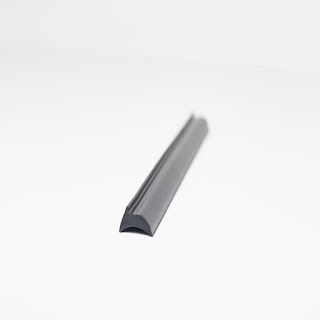Pvc Pipe Seals
PVC (Polyvinyl Chloride) pipe seals, also known as PVC pipe gaskets or PVC pipe fittings, are essential components used in the installation and maintenance of PVC piping systems. These seals are designed to create secure and leak-resistant connections between PVC pipes, fittings, and various components, ensuring the integrity and functionality of plumbing, irrigation, and industrial systems. Below, we delve into the features, types, functions, and common applications of PVC pipe seals:
**Features and Composition:**
1. **Material:** PVC pipe seals are typically made from PVC or a compatible elastomeric material. The choice of material depends on the specific application, pressure requirements, and compatibility with the conveyed fluids.
2. **Design:** PVC pipe seals come in various designs to accommodate different pipe sizes, configurations, and connection methods. Common designs include gaskets, O-rings, and flexible couplings.
3. **Size and Profile:** These seals are available in various sizes and profiles to fit the dimensions and types of pipes and fittings they are intended to seal. They may have flat gasket profiles or contoured shapes to match the pipe's end or fitting.
**Types of PVC Pipe Seals:**
1. **Gaskets:** PVC pipe gaskets are typically flat or ring-shaped rubber or elastomeric components designed to create a watertight or airtight seal when placed between two mating PVC pipe ends or fittings. They are commonly used in plumbing and irrigation systems.
2. **O-Rings:** O-rings are circular elastomeric seals with a cross-sectional shape resembling the letter "O." They are placed in a groove or recess within a PVC fitting or joint and provide a reliable sealing function when compressed between the mating surfaces.
3. **Flexible Couplings:** Flexible PVC couplings are designed to connect two sections of PVC pipes or fittings while allowing for some movement and misalignment. These couplings have built-in seals or gaskets to ensure a watertight connection.
**Functions and Significance:**
PVC pipe seals serve several important functions:
1. **Sealing:** The primary function of PVC pipe seals is to create a secure and leak-resistant seal between PVC pipes, fittings, and other components. This prevents the escape of fluids and the intrusion of external elements, such as water, soil, or contaminants.
2. **Pressure and Leak Resistance:** These seals are crucial for maintaining the structural integrity of PVC piping systems, ensuring they can withstand internal pressure without leaks or failures.
3. **Corrosion Prevention:** PVC pipe seals help prevent corrosion or deterioration of pipes and fittings by sealing out moisture and chemicals that may cause degradation.
4. **Alignment and Support:** In some cases, flexible PVC couplings with integrated seals provide flexibility and support, accommodating slight misalignment or movement in the piping system.
**Common Applications:**
PVC pipe seals are widely used in various applications, including:
1. **Plumbing:** In residential, commercial, and industrial plumbing systems, PVC pipe seals are used to connect PVC pipes, create watertight joints, and ensure the reliable conveyance of water and wastewater.
2. **Irrigation:** PVC pipe seals are essential in agricultural and landscaping irrigation systems to maintain leak-free connections and efficient water distribution.
3. **Industrial Pipelines:** These seals are used in industrial settings for conveying various fluids, including chemicals, wastewater, and process fluids. They help prevent leaks and maintain the integrity of the systems.
4. **Sewer and Drainage Systems:** In sewer and drainage systems, PVC pipe seals are employed to create watertight connections and prevent the infiltration of groundwater or soil.
5. **Water Treatment Plants:** PVC pipe seals play a role in connecting and sealing pipes and fittings in water treatment facilities, ensuring the proper flow and containment of treated water.
In summary, PVC pipe seals are indispensable components in PVC piping systems, contributing to their reliability, durability, and leak resistance. These seals help maintain the integrity of water distribution, drainage, and industrial pipelines, ultimately ensuring the efficient and safe conveyance of fluids in various applications.


Yorumlar
Yorum Gönder